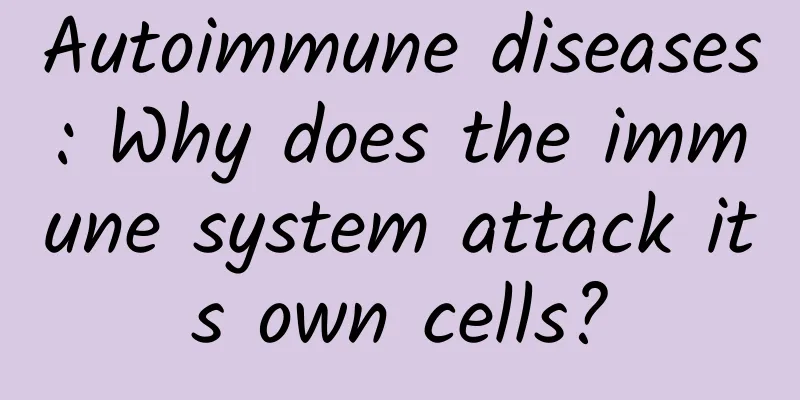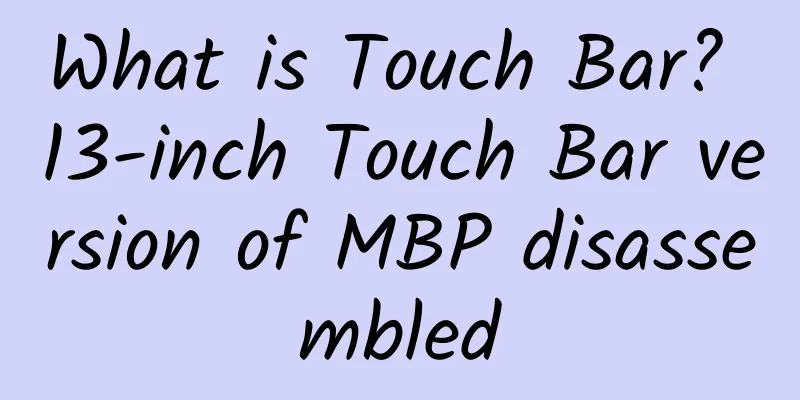Autoimmune diseases: Why does the immune system attack its own cells?

|
Some people develop autoimmune diseases, and we now know how. However, we still don't know why the same substance causes disease in some people and not in others. It may have something to do with genetics. This article is authorized to be excerpted from "Fighter Cells: A Miraculous Journey of the Human Immune System" (Utopia Hainan Publishing House, October 2022 edition), with some deletions. By Philipp Dettmer Translation | Li Chaoqun The immune system is very careful about autoimmunity - only cells that can distinguish between self and foreign can leave the thymus alive, as evidenced by the many tests that T and B cells must go through before they can be activated and truly effective. But despite the safety mechanisms and the many safeguards that prevent the immune system from attacking itself, things can still get wildly out of control. If a series of events occur one after another in which the immune system mistakes the body it is supposed to be guarding for an enemy that needs to be killed, the safety mechanisms will fail. In a sense, autoimmune diseases are like this: civilian cells are working hard to keep the body running, transport nutrients, and keep the body's tissues and organs intact, but a part of the immune army comes to destroy it and shoots down a large number of civilian cells. Autoimmune diseases do not appear out of thin air. For most patients, they are a great misfortune. The actual situation is certainly more complicated, but we can just discuss the basic principles. In short, under normal autoimmunity, T cells and B cells can recognize proteins of self-cells, namely "self-antigens". It represents the self . Autoantigens can be proteins on the surface of liver cells, molecules of important substances such as insulin, or structures in nerve cells. Once misled T cells and B cells bind to these autoantigens, the adaptive immune system will launch an immune response against itself. At this time, the immune system can no longer distinguish between self and foreign matter - it thinks that its own cells are foreign matter. The severity of these diseases varies from mild to life-destroying or even fatal. What went wrong to make the immune system so confused? The disease develops in several stages and several conditions must be met: First, the ability of MHC (major histocompatibility complex) molecules to effectively bind to self-antigens is largely genetic, as is everything written into the genetic code. You can’t choose your parents, or your genetic makeup (at least not yet). In an earlier chapter we mentioned that everyone’s MHC molecules are very different. MHC molecules come in hundreds of slightly different shapes, not all of which are perfect, and some, as fate would have it, are very good at presenting self-antigens. Everyone has a different genetic risk for autoimmune disease, so while everyone can get an autoimmune disease, some people have genes that produce a particular type of MHC molecule, and they are at a higher risk. But genetic susceptibility alone is not enough. The second condition for the occurrence of autoimmune diseases is that the body must be able to produce T cells or B cells that can recognize self-antigens, and these cells must not be killed by the body. The human body produces tens of billions of T cells every day, and by chance alone, there will be millions of them with receptors that can effectively recognize self-antigens. Most of these cells will not survive the training of the thymus or bone marrow, but sometimes the mechanism does not work and these cells will enter the blood circulation. It is possible that at this moment, you have some T cells and B cells in your body that can cause autoimmune diseases. But it is not enough to have these cells alone, they must be activated. Now here’s where things get complicated. We’ve spent a lot of time talking about the fact that the adaptive immune system can’t activate on its own. Only the innate immune system can order it to activate, and to order it to activate requires a battlefield, an environment in the body that can cause the innate immune cells to escalate their immune response. We don’t know for sure how this happens, and it’s even harder to watch the whole process in a living person—people often get sick, but rarely have serious consequences, usually just infections that get cleared. But the steps for autoimmune disease might go something like this: Step 1: Genetic susceptibility (not necessary, but will greatly increase the probability of disease). Step 2: The body can produce B cells and T cells that can recognize self-antigens. Step 3: When the human body is infected, the innate immune system is stimulated to activate the above-mentioned type of B cells and T cells. How exactly do infections cause autoimmune diseases? Although it's not completely clear, a popular theory among immunologists is called "molecular similarity," which basically means that the antigens of microorganisms and somatic cell antigens (self-antigens) are very similar. First, this can happen by chance. Some shapes are just useful in the microscopic world; despite the variety of shapes available, some shapes are similar to each other. Other pathogens mimic the shape of their host's proteins. This mechanism makes perfect sense, and it's not new to the animal world: In a world full of predators, camouflage is a big help in survival. Butterflies camouflage themselves into leaves, white ptarmigans blend in with the snow, crocodiles disappear into muddy ponds—animals of all kinds try to avoid detection as much as possible. For viruses or bacteria, human tissue is like a forest full of fierce predators searching for them, so mimicking the surrounding environment to avoid detection is an effective strategy. So far we have been explaining this in a simplified way, but to explain it better, we need to add some details. When we talked about the largest library in the universe, we said that each T cell and B cell has a unique receptor that recognizes a specific antigen. In fact, the situation is more complicated than that. In fact, each T cell and B cell receptor recognizes a wider range of antigens. Each receptor is very good at recognizing a specific antigen, but it can also bind to some other antigens. For example, the B cell receptor is very good at recognizing a specific antigen, but it can also recognize 8 other similar but not identical antigens. It's like when you're working on a jigsaw puzzle and you find two pieces that almost fit together. There's a little gap between them so they don't fit together perfectly, but they won't fall out if you don't pull too hard. Now let's imagine how a real person might develop an autoimmune disease. In our example, it all starts with a pathogen, perhaps a virus, that carries an antigen that resembles a self-antigen, such as a common protein in human cells. Once the virus invades the body and starts wreaking havoc, somatic cells, macrophages, and dendritic cells release a large amount of cytokines, causing inflammation, which in turn triggers dendritic cells to sample viral antigens that resemble self-antigens. This in turn prompts all cells near the battlefield to produce more MHC-I molecules and display more internal proteins. In the nearest lymph nodes, the dendritic cells may find helper or killer T cells that can perfectly bind to the viral antigen. Because the viral antigen is very similar to a certain self-antigen, this T cell receptor can also bind to this self-antigen. The killer T cells also arrive at the battlefield and begin to kill infected cells, but outside the infected cells, they find that the windows of healthy cells also display self-antigens similar to the viral antigen. So the killer T cells begin to kill innocent healthy cells. In this case, the real infection that the human body is experiencing is critical. Because killer T cells are activated by the ongoing infection, appropriate cytokines and battlefield signals, some of these killer T cells will also become memory killer T cells. Even after the real infection is cleared, these immune cells will still recognize the self-antigens presented by normal cells, mistakenly thinking that there are many enemies around. Thus, an accidental autoimmune reaction becomes an autoimmune disease. At this point, the adaptive immune system thinks it is being activated to attack self-antigens and body cells expressing self-antigens. What else can it do? This is a "Murphy's Law" situation: everything that can go wrong has gone wrong, and all the conditions for immune cell activation have been met. Even worse, the situation gets worse! The activated helper T cells start to activate B cells, which can adapt themselves according to the self-antigens. You may remember that when activated B cells begin to optimize and improve their antibodies, they can mutate into various different variants, greatly improving their fighting power. Here, they can produce antibodies that can better bind to self-antigens. In the worst case, if such a B cell receives a confirmation signal from a helper T cell, the immune system will generate plasma cells, which will release a large number of "autoantibodies" to bind to the body cells and mark them for death. When B cells develop into plasma cells, they also generate memory cells. Suddenly, the long-lived plasma cells in the bone marrow start to produce antibodies that attack the body. They can live for years or decades. Once the adaptive immune system generates memory cells that attack self-cells, they are activated again and again - because self-antigens are everywhere. These cells feel that they are trapped in the enemy camp and are surrounded by enemies. It's like the joke: A man is driving on the highway, and his wife calls him to be careful because she heard on the radio that someone was driving the wrong way on the highway. As a result, he said angrily: "Honey, there is not only one person, there are hundreds of people driving the wrong way!" No matter how many somatic cells the immune system kills, the body always produces more, leading to chronic inflammation and chronic autoimmune diseases. Confused immune cells react in this way because they mistakenly believe that they are surrounded by powerful enemies. Although autoimmune diseases refer to a range of different conditions, they all share many common symptoms: fatigue, rashes, fever, itching and other skin problems, abdominal pain and various digestive problems, joint swelling and pain, and so on. Autoimmune diseases are rarely life-threatening and are not particularly lethal, but more like chronic diseases that cause pain and exhaustion. There is no good treatment at present - to cure it, you have to find and kill the memory cells that attack the self-antigens among the billions of B cells and T cells. At least for now, autoimmune diseases cannot be cured - if you have this disease, you have to keep actively dealing with it. To reduce inflammation and pain, various immunosuppressive drugs, especially those that suppress inflammation, are generally used for treatment. As you can imagine, this is not very good. These drugs weaken the immune system so that it does not attack itself too much, thereby reducing the corresponding symptoms, but at the same time, they also make the patient more susceptible to infection. Off-topic non-responsiveness ◆ ◆ ◆ Immune system anergy is an interesting concept worth discussing; it is a particularly clever passive strategy employed by the immune system to suppress “autoreactive T cells,” that is, T cells that recognize self-antigens. First, let me clarify one of my earlier simplifications (which was actually a white lie that got us here relatively easily, but “simplification” is much nicer). Earlier, we talked a lot about dendritic cells, and how they start sampling the battlefield after they become activated. But that’s not accurate; dendritic cells are always in sampling mode. Even when there’s no danger, a few dendritic cells, such as those in the skin, will sample material floating in normal tissue fluid—presumably many of which are self-antigens—and then travel to the lymph nodes to present their samples to the adaptive immune system. Now you might ask: How can this be good? Wouldn't dendritic cells that pick up self-antigens cause autoimmune disease? Well, think about it again - what is one of the main functions of the innate immune system? To provide context for the adaptive immune system. By sending the message "everything is fine, check it out" in the lymph nodes, the dendritic cells can actually prevent autoimmune disease from occurring. Because it's actually searching for autoreactive T cells, which are T cells that can bind to self-antigens through MHC molecules. If the dendritic cell happens to find an autoreactive T cell, it can bind to it and stop it from causing trouble. Do you remember the "kiss" signal that dendritic cells give to T cells in order to activate them? That is the confirmation signal that lets T cells know that there is real danger? If there is no danger, dendritic cells will not release this signal. If a T cell that receives an activation signal from its own MHC molecule is not "kissed" in this way, it will inactivate itself. It will not die immediately, but it cannot be activated again, and it will never be able to play a role again. It will have to wander around for the rest of its life and finally die quietly. When a person is healthy, the innate immune system is not idle either, but has been quietly fighting autoimmune diseases behind the scenes. The interweaving of various systems, and all activation and regulatory mechanisms work together to provide people with all-round protection. All of this is so wonderful, so wonderful. The immune system calls on all instruments to play a song of well-being. |
>>: Is there any pattern in the arrangement of galaxies, fractal or random?
Recommend
Chen Yudian: Learn Management from Huawei - Gaining Insight into Management and Becoming an Excellent Leader
How to manage well and enhance the core competiti...
The game behind Taobao's anti-counterfeiting campaign
Yesterday, Taobao released its 2014 anti-counterf...
Do cats really think they are liquid? They can get into anything.
Produced by: Science Popularization China Author:...
Ningde Mini Program Production Company, how much does it cost to produce a kitchen mini program?
The factors affecting the quotation of Ningde Kit...
The event is over, but your work has just begun!
In the Internet age, we are surrounded by various...
How to attract traffic and promote on Weibo? You have to learn this trick!
There are many ways to attract traffic on Weibo, ...
11 hair dryer reviews: Shocking! I bought fake brand products in a live broadcast room! How to distinguish?
Here’s what happened: On this year’s Double Eleve...
Audi is not the only "light factory". These lights are more dazzling.
When it comes to the term "lighting factory&...
Will driverless cars replace taxis?
Ride-hailing app Uber announced yesterday that it...
10 major trends in digital marketing promotion in 2019!
Trend 1: Authenticity becomes a more native brand...
Should I take medicine three times a day with my meals? Many people take it wrong...
When we take medicine, we often see "three t...
Have you received any orders from Baidu AiPurchasing? Is Baidu Ai Purchasing effective?
Now many companies know that Baidu has launched a...
It’s been seven years. Do you still remember the “rabbit” that lived on the moon?
"Hi! Good night this time!" Seven years...
Community operation: Does your group need to be active?
1. Does your group need to be active? Group activ...
A 32-year-old man was forced to go on three blind dates in one day, and he did this to reject his family!
Because his family kept arranging blind dates for...









